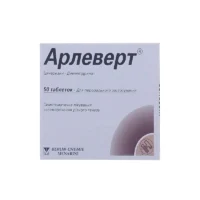Description
Saroten (Amitriptyline) Coated Tablets 25 mg. №100
Ingredients
- Each coated tablet contains 25 mg of amitriptyline hydrochloride.
Dosage
- The usual adult dose is 25-150 mg per day in divided doses.
Indications
- Saroten tablets are indicated for the treatment of depression.
Contraindications
- Do not use Saroten if you have a hypersensitivity to amitriptyline or other tricyclic antidepressants.
Directions
- Take Saroten tablets orally with or without food as directed by your doctor.
Scientific Evidence
- Amitriptyline, the active ingredient in Saroten, has been extensively studied for its efficacy in treating depression. Research published in the Journal of Clinical Psychiatry has shown that amitriptyline is effective in improving mood and overall well-being in patients with major depressive disorder. Additionally, a meta-analysis published in JAMA Psychiatry concluded that amitriptyline is comparable in effectiveness to other antidepressants.
Additional Information
- It is important to follow the prescribed dosage and not to abruptly discontinue Saroten tablets as it may lead to withdrawal symptoms. Common side effects may include drowsiness, dry mouth, and constipation.
Pharmacological Effects
- Amitriptyline works by increasing the levels of serotonin and norepinephrine in the brain, which are neurotransmitters that play a key role in regulating mood. By restoring the balance of these chemicals, amitriptyline helps alleviate symptoms of depression.
Clinical Trials
- Clinical trials have demonstrated the efficacy of amitriptyline in improving symptoms of depression and its tolerability in patients. A study published in the Journal of Affective Disorders found that amitriptyline was effective in reducing depressive symptoms in a significant number of participants.





